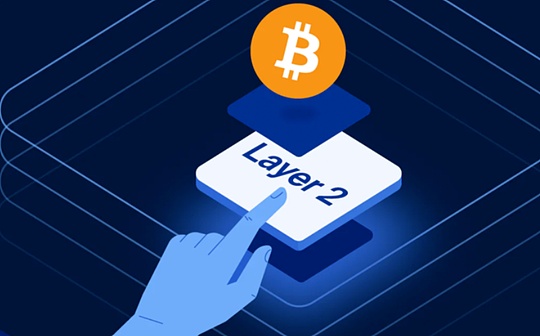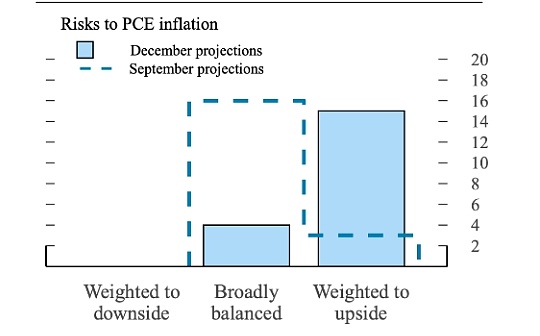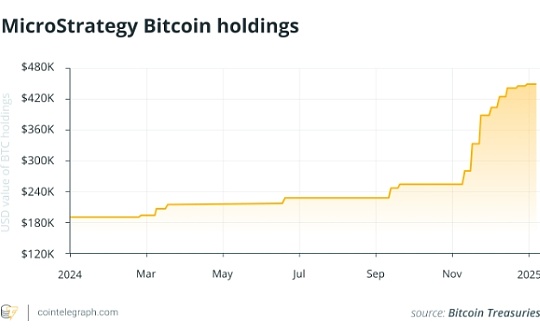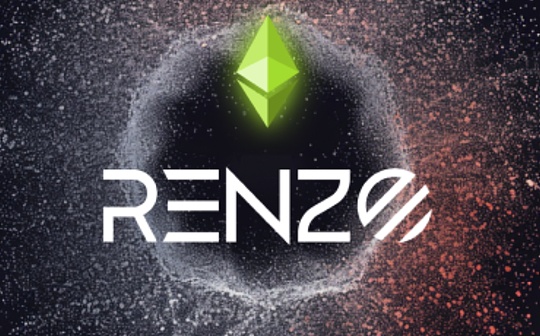The whole story of the rights protection incident of major BTCFi leading project Solv

Reprinted from jinse
01/13/2025·0MThe Solv rights protection incident for large households was like a farce, and now it has finally come to an end.
Through the bustling sounds, we can see many things, some people are shining brightly, some people are showing their teeth and claws, and some people are ugly.
We can now go back and review what are facts and which are opinions, which are objective and which are subjective.
1. Let’s take a look at the complete timeline first.
November 28, 2024: Solv Protocol, the leading Bitcoin staking protocol, announces TGE (token issuance); @SolvProtocol
December 30, 2024: Binance announced the listing of Solv token; @binancezh
January 3, 2025: Solv major Mudita posted information on Twitter to defend his rights and invested 1,800 BTC, but the final return was less than expected; @Clarissexx0805
January 4, 2025: Hans, co-founder of Nubit, a BTC ecological data availability project, published content pointing out that the BTC in Solv is not really locked and there is a false TVL; @trackoor
January 4, 2025: Solv co-founder Meng Yan responded to a force in the industry that is maliciously slandering and discrediting Solv; @myanTokenGeek
January 4, 2025: Solv CEO Ryan issued an article to refute and clarify, responding to the content of Nubit co-founder hans one by one. hans’s evidence is not convincing; @RyanChow_DeFi
January 5, 2025: Solv official recommendation was stolen;
January 6, 2025: Binance’s third Megadrop project - Solv Protocol is open;
January 6, 2025: Solv activist Mudita announced the issuance of coins.

2. The changing process of public opinion
The above timeline is an objective fact. Let’s take a look at the views of all parties and the changes in public opinion.
(1) The first stage: empathy
When I first saw the rights protection information, my first reaction was that the project team and the large investors did not agree on the distribution of interests before the listing. The large investors were cut off, and the benefits were naturally to the retail investors.
This is why I first sent a tweet to give my initial thoughts: Many things are not the contradiction between the bourgeoisie and the proletariat, but the contradiction between the production class and the distribution class.
In other words, it is not a conflict between rich and poor people, but a conflict between those who contribute value and those who ultimately distribute value.
There is no such thing as right or wrong, so I don’t take sides.
At this time, the direction of public opinion is mainly "empathy." When most people see the rights protection information, their first reaction is that the rights defenders are a vulnerable group and the project party has original sin, so they will sympathize with the rights defenders and criticize the project party.
Mudita's tweets are full of sympathetic comments, and some big Vs directly denounced Solv on the platform.
However, experienced industry veterans who have seen more can clearly predict the subsequent direction. A typical example is teacher Chen Jian who gave a clear view: the big fish in the upstream have not obtained enough benefits, leading the small fish in the downstream Rights protection generally does not have good results. @jason_chen998
(2) Phase Two: Slamming BTCFi Insiders
Then, someone "discovered" that 1,800 BTC had always been in the wallet of a large user, without participating in the pledge, and could be calculated as TVL only through signatures. From then on, public opinion began to turn to slam BTCFi's various shady stories.
First ask if it is, then why.
This is a typical case of spreading rumors. When each platform counts TVL, it only counts the amount of funds in the address on the chain. In fact, there is no false TVL that is double-counted through signatures.
This is why I wrote a second tweet to refute this statement: Technically speaking, UTXO cannot be approved for use multiple times. Pre-signing is not a way to prove assets. Just use message signatures to prove address ownership.
Moreover, generally the project party will make the pledge address public, so the TVL data is mainly based on these addresses. The project party joins some large investors to invest funds to increase their own TVL, such as using the MPC wallet to implement multi-signature, which is jointly managed by the large investors and the project party. funds.
More importantly, "false TVL" does not mean that the data is falsified, but that these TVLs are dead funds and cannot truly create value. They are only used to attract subsequent retail investors' funds and build momentum for the project.
Real TVL is liquidity that can really be utilized, such as lending projects or Swap projects. The liquidity is high and users can better use the products; while fake TVL is just lying there, and then there is no liquidity that is used, such as Pledge project.
(3) The third stage: project parties engage in business war with each other
What pushed public opinion to a climax was Hans, the founder of the Nubit project, joining the fray and tearing up Solv.
Hans published an article criticizing Solv for recycling the same assets, saying that BTC is not really locked, and encouraging users to run and withdraw their coins.
However, the proof given by hans was not sufficient and was refuted and clarified one by one by Solv CEO Ryan.
Nubit and Solv are both well-known projects in BTCFi, and their competitive relationship has directly escalated to an open conflict.
If Hans had good evidence and directly exposed the industry's shady industry, he would be regarded as a righteous and outspoken industry hero. Unfortunately, Hans did not provide strong evidence, and many judgments are subjective. We have to doubt its motive, it seems to be purely to smear.
This was a disadvantage, and the professionalism and reliability of the Nubit project itself were greatly affected.
(4) The fourth stage: Binance continues to list coins, and rights defenders issue coins and harvest them.
In the end, Binance continued to promote the currency listing as originally planned. The rights defender found that public opinion was not good for him and there was no need to tear up anymore, so he turned around and started issuing coins to harvest the last wave of traffic.
Everyone was shocked again: The final outcome of rights protection in the currency circle is to issue coins?
People who originally supported rights protection fell silent, feeling that their sympathy was being exploited;
Nubit, the project team that was at odds with each other over the course of the project, fell silent, and his own end became a joke;
The smeared Solv fell silent, and the crisis of public opinion collapsed on its own;
In the end, the winner turned out to be the rights defender, who not only gained traffic, but also maximized the utilization of the traffic and directly monetized it through issuing coins.
**3. The relationship between all living beings under the crisis of
public opinion**
In this war of public opinion, we can see the differences between idealists and opportunists.
One is to really do things, push the industry forward, and obtain commercial returns from it; the other is to collect the money after reaping the dividends of the times, defend the rights of those who are dissatisfied with the distribution of benefits, and finally monetize the traffic.
I have always felt that Teacher Meng Yan is one of the few people worthy of respect. @myanTokenGeek
Many people may only know that Mr. Meng Yan is the co-founder of Solv. In fact, he has many titles and achievements.
Before joining the blockchain industry, Mr. Meng Yan first stayed at CSDN for 6 years and was the vice president of CSDN. He later worked at IBM and can be said to be a technical expert in the Web2 industry.
Teacher Meng Yan began to come into contact with blockchain technology in 2015 and became a well-known blockchain expert, evangelist and consultant, especially famous in the Chinese blockchain community.
Teacher Meng Yan has been rated as one of the top ten blockchain educators in China. He proposed the translation of “token” and promoted research on tokenomics.
In 2020, he founded Solv Protocol, focusing on the development of financial NFTs and semi-fungible tokens (SFTs). He is also a co-author of the ERC-3525 standard, the first standard designed for semi-fungible tokens.
During this period, he was also involved in several collaborative projects, such as the project DESFT with the Monetary Authority of Singapore (MAS) and the Bank of Ghana.
Currently, Mr. Meng Yan is mainly responsible for the development of the ERC-3525 ecosystem in Solv Protocol.
Taking a closer look at these past experiences, we can see that Teacher Meng Yan is very respectable in terms of professional knowledge, industry experience, and personality.
Starting a business, incubating a project, or making a product is like raising a child. Naturally, you cannot tolerate unwarranted slander from others.
Teacher Meng Yan's performance in this public opinion crisis is remarkable. After all, if others come to knock on your door, you will naturally fight.
4. Where will our industry go?
Teacher Meng Yan mentioned a point before, which is worth sharing again:
Web3 is not only a technological revolution, but also a social movement. It follows the three stages of social movements: positive (idealism stage), negative (alienation stage), and integration (integration with reality stage).
(1) The positive stage of Web3: promoted by idealists such as Satoshi Nakamoto and Vitalik, who proposed a decentralized and transparent value system.
(2) Anti-stage: Witness the alienation of this ideal - deviating from its own goal and moving towards its opposite, which is the current phenomenon of "cutting leeks".
(3) Integration stage: Emphasis on the need for Web3 to integrate with the real world, combine with tradition, and use idealistic things to transform and integrate the real world.
Historical experience tells us that the "anti" stage often requires paying a huge price and will produce many problems and contradictions, while the "union" stage is usually an effective way to ultimately achieve the goal.
Web3 is currently in the "anti" stage, which is characterized by the conflict between ideals and reality, as well as the concentrated outbreak of various problems and contradictions.
However, we cannot stay in this state for long because it is essentially the use of idealistic slogans to achieve the illegitimate goals of individuals or small groups. This approach not only deviates from the original intention of Web3, but also seriously damages the healthy development of the entire ecosystem.
Ordinary users would rather have a centralized giant a thousand kilometers away do evil than have a thousand hooligans appear within one kilometer to do evil to us.
Web3 wants to deconstruct centralized legal currency and the traditional financial system, but it has created a lot of scams and the performance of most projects is far inferior to traditional finance.
Therefore, we must have a very clear understanding of these issues before we can take this step forward.
Finally, end with one sentence:
If the good guys do nothing, the bad guys will succeed.
This is why I wrote this article, hoping to use my voice and words to record this chaotic incident.




